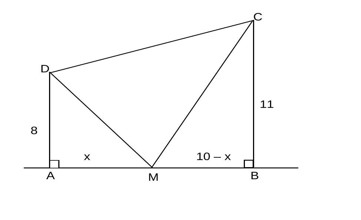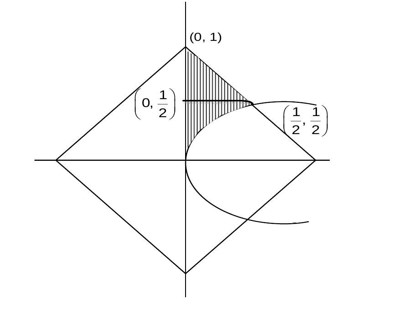Ncert Solutions Maths class 12th
Get insights from 2.5k questions on Ncert Solutions Maths class 12th, answered by students, alumni, and experts. You may also ask and answer any question you like about Ncert Solutions Maths class 12th
Follow Ask QuestionQuestions
Discussions
Active Users
Followers
New answer posted
2 months agoContributor-Level 10
MD²+MC² is minimum when M is the midpoint of projection of CD on AB.
New answer posted
2 months agoNew answer posted
2 months agoContributor-Level 9
The expression inside log is a GP sum: (1/3)/ (1-1/3) = 1/2.
log? (1/2) = 1/2.
The series S = 1+2/3+6/3²+.
S - S/3 = 1 + 4/3² + 4/3³ + . = 1 + (4/9)/ (1-1/3) = 1+2/3=5/3.
(2/3)S = 5/3 ⇒ S=5/2.
l = (5/2)/ (1/2)=5. l²=25.
New answer posted
2 months agoContributor-Level 9
S = {n ∈ N | [n i; 0 1] [a b; c d] = [a b; c d] ∀a, b, c, d ∈ R}
[na+ic, nb+id; c, d] = [a, b;c, d]
This must be an identity matrix. n=1. The question seems to have typos. Let's follow the solution logic.
The solution implies the matrix must be [1 0; 0 1] or [-1 0; 0 -1]. And n must be a multiple of 8.
2-digit multiples of 8 are 16, 24, ., 96. Total 11 numbers.
New answer posted
2 months agoContributor-Level 10
α+β=64; αβ=256=2?
(α³/β? )¹/? + (β³/α? )¹/? = (α+β)/ (αβ)? /? = 64/32=2.
New answer posted
2 months agoContributor-Level 9
L: x/1=y/0=z/-1. Let a point on L be (r,0, -r).
Direction ratio of PN is (r-1, -2, -r+1).
PN is perpendicular to L, so (r-1) (1)+ (-2) (0)+ (-r+1) (-1)=0 ⇒ 2r-2=0 ⇒ r=1. N (1,0, -1).
Let Q be (s,0, -s). Direction ratio of PQ is (s-1, -2, -s+1).
PQ is parallel to plane x+y+2z=0, so normal to plane is perp to PQ.
(s-1) (1)+ (-2) (1)+ (-s+1) (2)=0 ⇒ s-1-2-2s+2=0 ⇒ -s-1=0 ⇒ s=-1. Q (-1,0,1).
PN = (0, -2,0). PQ= (-2, -2,2).
cosα = |PN.PQ|/|PN|PQ| = 4/ (2√12) = 1/√3.
New answer posted
2 months agoContributor-Level 9
e? - e? - 2e³? - 12e²? + e? + 1 = 0
e³? - 2 + e? ³? - e? [e³? + 12e? - 1] = 0
Let y=e? y? -y? -2y³-12y²+y+1=0.
The solution breaks the equation into (e³? - 4e? - 1) (e³? - 1 + 3e? ) = 0
Either e³? = 4e? + 1 (One Solution)
OR e³? = 1 - 3e? (One Solution)
∴ the equation has total 2 solutions.
Taking an Exam? Selecting a College?
Get authentic answers from experts, students and alumni that you won't find anywhere else
Sign Up on ShikshaOn Shiksha, get access to
- 65k Colleges
- 1.2k Exams
- 679k Reviews
- 1800k Answers


